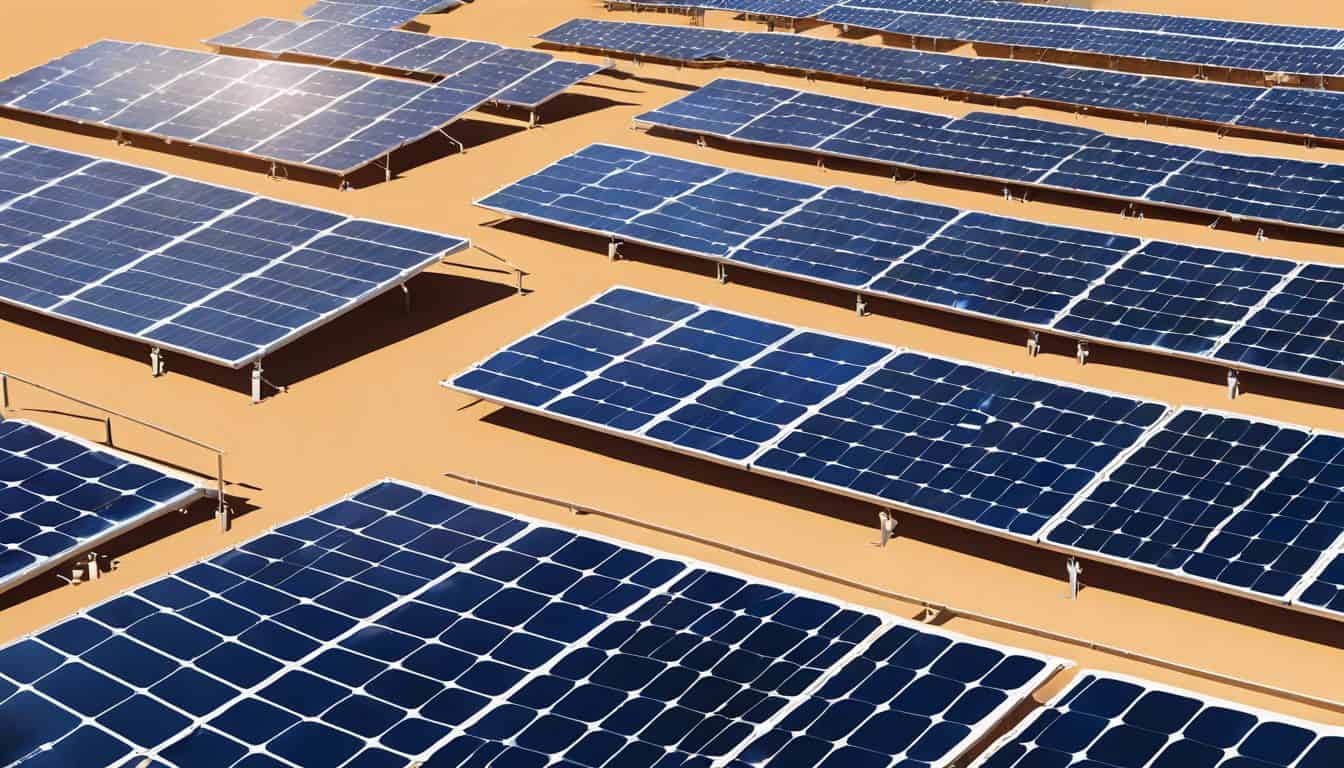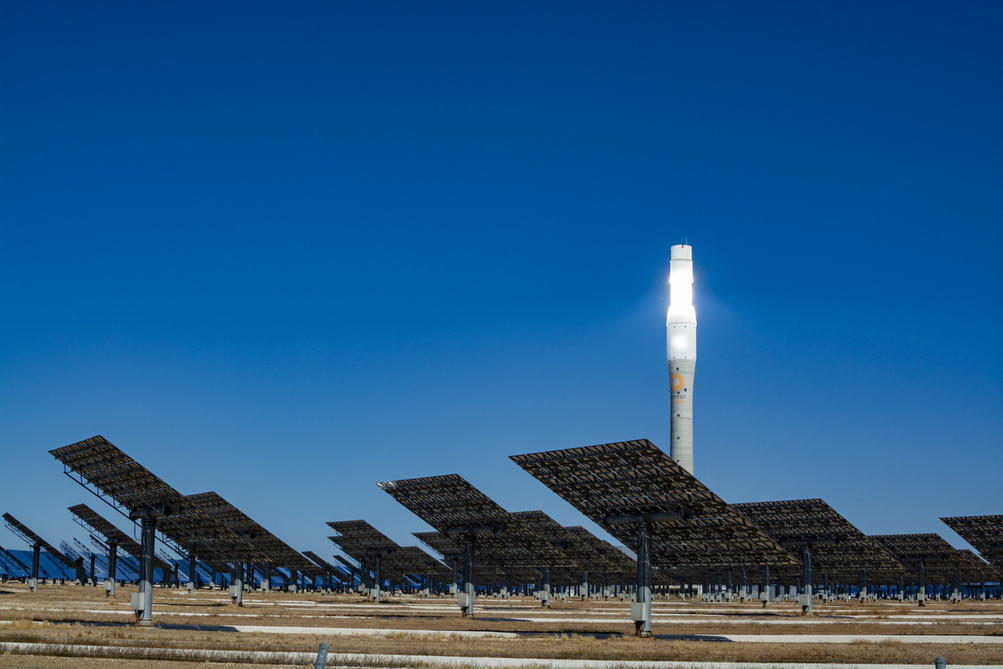As the world grapples with the urgent need for sustainable energy solutions, Concentrated Solar Power (CSP) has emerged as a promising technology that can revolutionize our approach to clean energy. This article explores how CSP is an innovative power generation method and a key player in achieving crucial Sustainable Development Goals (SDGs).
Understanding Concentrated Solar Power
Concentrated Solar Power harnesses the sun’s energy using mirrors or lenses to focus a large area of sunlight onto a small area. This concentrated light is converted into heat, which drives a heat engine (usually a steam turbine) connected to an electrical power generator.
There are several types of CSP systems, including:
- Parabolic trough systems
- Solar power towers
- Dish/engine systems
- Linear Fresnel reflectors
Each of these systems has unique advantages, but they all share the goal of providing clean, renewable energy. Unlike photovoltaic solar panels, CSP systems can store thermal energy, producing electricity even when the sun isn’t shining. This makes CSP a more reliable and dispatchable form of renewable energy.
For a deeper dive into the latest advancements in this field, check out this guide to concentrated solar power innovations.
CSP’s Contribution to Sustainable Development Goals
Concentrated Solar Power plays a significant role in achieving several of the United Nations’ Sustainable Development Goals:
SDG 7: Affordable and Clean Energy
CSP directly addresses this goal by providing a reliable and sustainable energy source. As technology advances and becomes more widespread, it has the potential to significantly increase energy access in developing regions. The ability of CSP plants to store energy also contributes to grid stability, making it an attractive option for countries looking to transition away from fossil fuels.
SDG 8: Decent Work and Economic Growth
The CSP industry creates jobs across various sectors, from manufacturing and construction to operations and maintenance. These jobs often require specialized skills, contributing to developing a highly skilled workforce. Moreover, large-scale CSP projects can stimulate local economies, particularly in rural areas where such projects are often located.
SDG 13: Climate Action
Perhaps one of CSP’s most crucial contributions is its potential to combat climate change. By providing clean energy at scale, CSP can significantly reduce greenhouse gas emissions from the power sector. Its ability to provide dispatchable renewable energy also makes it an essential tool in climate change mitigation strategies, helping to balance grids as they incorporate more variable renewable sources like wind and solar PV.
Case Study: Mohammed bin Rashid Al Maktoum Solar Park
A prime example of CSP’s potential is the Mohammed bin Rashid Al Maktoum Solar Park in Dubai. When completed, this massive project will be the world’s largest single-site solar park, with a planned capacity of 5,000 MW by 2030. The park includes both photovoltaic and CSP technologies, showcasing how different solar technologies can work in tandem.
The project contributes to Dubai’s goal of 75% clean energy by 2050, creates thousands of jobs, and stimulates the local economy. It’s a testament to how large-scale CSP projects can simultaneously contribute to multiple sustainable development goals.
Challenges and Solutions for CSP Implementation
Despite its potential, CSP faces several challenges:
- High initial costs compared to other renewable technologies
- Water scarcity in areas ideal for CSP (typically arid regions with high solar irradiance)
- Environmental concerns related to land use and impact on local ecosystems
However, ongoing research and development are addressing these challenges. Innovations in thermal storage, dry cooling technologies, and more efficient mirror designs are making CSP more cost-effective and environmentally friendly.

Future Prospects of CSP in Sustainable Development
The future of CSP looks bright, with emerging technologies promising to increase efficiency and reduce costs. Integration with other renewable energy sources, such as wind power or green hydrogen production, could further enhance CSP’s role in a sustainable energy future.
As we move towards a more sustainable world, technologies like Concentrated Solar Power will play an increasingly vital role. By providing clean, reliable energy and contributing to economic growth and climate action, CSP is not just a power generation technology – it’s a catalyst for achieving our sustainable development goals.
FAQ
How does CSP support SDGs beyond clean energy and climate action?
CSP indirectly advances Sustainable Development Goal 3 (Health) by reducing air pollution from fossil fuels and enabling solar-powered water purification in off-grid areas. It also supports Sustainable Development Goal 6 (Water Security) through innovations like dry cooling systems that cut water use by up to 90% compared to traditional methods. Hybrid projects combining CSP with desalination plants, like Saudi Arabia’s NEOM initiative, demonstrate this dual benefit.
Is CSP cost-competitive with other renewables like solar PV?
While CSP’s upfront costs are higher than PV ($4,000–$6,000/kW vs. $800–$1,200/kW), its built-in thermal storage provides 10–15 hours of dispatchable power, avoiding the need for separate battery systems. In high-irradiance regions like Chile’s Atacama Desert, hybrid CSP-PV plants now achieve levelized costs below $0.07/kWh, making them competitive with natural gas.
What makes CSP suitable for arid regions despite water scarcity?
Modern CSP plants use air-cooled condensers and robotic dry cleaning for mirrors, reducing water needs by 75–90%. Spain’s Gemasolar plant operates with near-zero water consumption for power generation, while South Africa’s Redstone CSP project uses molten salt storage that requires no water. These advancements make CSP viable in water-stressed areas.
How does CSP create skilled jobs compared to other renewables?
CSP generates 2–3× more permanent jobs per MW than wind or PV, primarily in high-skill roles like turbine maintenance and thermal system engineering. The Noor Ouarzazate complex in Morocco created 1,600 long-term technical positions and trained local workers in robotics and energy storage—skills transferable to other industries.
What policy changes could accelerate CSP adoption?
Key measures include:
- Storage mandates: Requiring grids to include 10–15% dispatchable renewables (e.g., California’s SB 100)
- Hybrid incentives: Tax breaks for CSP-PV-wind hybrids, as seen in India’s National Solar Mission
- Water-use regulations: Prioritizing dry-cooled CSP in arid zones, similar to Arizona’s 2024 renewable policy
Can CSP work in cloudy or low-sunlight regions?
While less efficient than in deserts, next-gen CSP systems using synthetic oils and ceramic particles now operate effectively at 30–40% lower irradiance levels. Germany’s Jülich plant demonstrates CSP’s viability in temperate climates, providing heat for district heating systems during winter months.
How does CSP enable green hydrogen production?
CSP’s high-temperature heat (up to 565°C) can power thermochemical water splitting, producing hydrogen 30% more efficiently than electrolysis. The HELIOS project in Cyprus combines a 50 MW CSP plant with hydrogen generation, aiming for $2/kg hydrogen—cost-competitive with fossil-based methods.

Leave a Reply